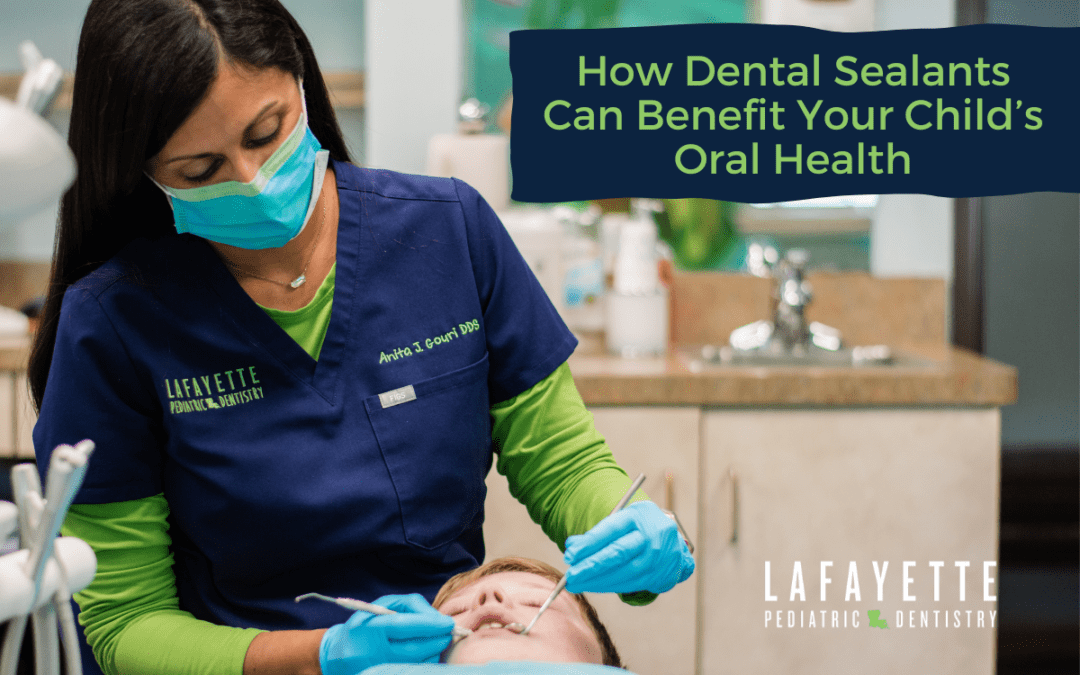As parents, we want only the best for our little ones, so keeping your child’s teeth healthy is undoubtedly a top priority. Unfortunately, tooth decay is a common issue that affects many children in the United States, and its consequences can be painful and long-lasting.
But what if there was a simple and effective way to help prevent tooth decay and protect your child’s oral health? Well, that’s where dental sealants come in.
By understanding what dental sealants are and how they work, parents can take an active role in keeping their child’s teeth free from cavities. Read ahead to learn more about them and why you should strongly consider getting sealants for your little one.
What are Dental Sealants?
Sealants are thin coatings that are brushed on the chewing surface of teeth, primarily the permanent molars located in the back of the mouth. They are a safe protective shield used to fight against tooth decay and gum disease.
Why Does My Kid Need Dental Sealants?
Molar teeth contain pits and grooves, or fissures, on their chewing surfaces, which can make them susceptible to decay. These fissures can be narrow and deep, making it challenging to clean because they are sometimes even narrower than a single bristle of a toothbrush.
Also, even if your child practices good oral hygiene every day, they could still be leaving food particles on their back teeth, where it is harder for them to reach. This will cause plaque and bacteria to build up, increasing the risk of dental caries and periodontal disease.
Sealants act as a “caulking”, which seals over these pits and fissures and creates a protective barrier against bacteria and a surface that is easier to clean when brushing.
This will help prevent cavities from forming. Dental sealants are also especially beneficial for children with special needs and children with hypoplasia, a condition where the teeth have weaker enamel.
According to a report released by the CDC, children aged 6-11 years without dental sealants are three times more susceptible to dental caries than those who have sealants. If these cavities go untreated, they can cause pain, infection, and even problems with eating, learning, and speaking.
Are Dental Sealants Effective?
Yes! When paired with a good oral hygiene routine, sealants can prevent up to 80% of cavities within the first two years of application and continue to prevent 50% of dental caries for up to four more years.
How Long Can Dental Sealants Last?
Generally, sealants can last up to nine years. However, they may chip or wear over time requiring touch-ups, so they need to be checked regularly during your kid’s dental appointments. Regular checkups will also allow the pediatric dentist to recommend re-application if necessary.
Other Benefits of Dental Sealants
- Fast and Painless. Applying dental sealants is a very simple process. It usually only takes a few minutes per tooth and the coating is also brushed on, making it a non-invasive procedure.
- Save money. Dental sealants help parents avoid costly restorative treatments to fix dental caries, such as fillings, crowns, or caps. In addition, some dental insurance covers sealants, so you may protect your kid from painful cavities at a fraction of the cost.
- Suitable for everyone. While children and teenagers are the most common ages to benefit from dental sealant treatments, young adults can also have deep pits and grooves that can be covered with dental sealants to protect the teeth from cavities and germs.
How Early Should I Get Dental Sealants for My Kid?
For maximum protection, dental sealants should be applied as soon as possible after a child’s permanent molars surface, which is around 6 years because this is the time their first permanent molar becomes visible, and around 12 years when the second permanent molar breaks through.
The Process to Apply Dental Sealants
- First, the tooth is cleaned, and a gel is placed on the tooth surface to make it a little rough, which helps the sealant to stick.
- The tooth is rinsed and dried once again.
- The sealant is painted on the tooth.
- The dentist may use a curing light on the tooth to help harden the sealant.
- The sealant now serves as a protective shield from cavities.
Dental Sealants are NOT a One Fix-All Solution
Even with a sealant treatment, your child should still maintain a good oral hygiene regime, which includes:
- Regular dentist visits every 6 months
- Brushing teeth at least twice a day and flossing once each day.
- Getting enough fluoride. Your child should brush their teeth with fluoride toothpaste and drink fluoridated water since fluoride can help make the tooth enamel stronger and thus prevent cavities.
- Eating a healthy diet
Read also: The 5 Most Common Causes of Cavities in Children
If you need answers to questions concerning dental sealants for kids, request an appointment with Dr. Gouri, your pediatric dentist in Lafayette, LA, today. Dr. Gouri and her well-trained team want to help your child, and you, build a strong foundation for oral health.
She will help to educate on the importance of children’s oral care and give the best tips to prevent cavities. Lafayette Pediatric Dentistry strives to promote healthy smiles for our patients from the very beginning. Request an appointment today!
Sources:
https://www.nidcr.nih.gov/sites/default/files/2017-12/seal-out-tooth-decay-factsheet.pdf
